Selected References:
- Abe K, et al. 2014. Impact of planning of pregnancy in women with epilepsy on seizure control during pregnancy and on maternal and neonatal outcomes. Seizure 23(2):112-6.
- Aydin B, et al. 2015. Olanzapine and quetiapine use during breastfeeding: excretion into breast milk and safe breastfeeding strategy. J Clin Psychopharmacol 35(2):206-8.
- Barton S, et al. 2018. Memory dysfunction in school-aged children exposed prenatally to antiepileptic drugs. Neuropsychology 32:784-796. doi:10.1037/neu0000465.
- Blotière PO et al. Risk of early neurodevelopmental outcomes associated with prenatal exposure to the antiepileptic drugs most commonly used during pregnancy: a French nationwide population-based cohort study. BMJ Open. 2020 Jun 7;10(6):e034829. doi: 10.1136/bmjopen-2019-034829. PMID: 32513880; PMCID: PMC7282331.
- Christensen J, et al. 2013. Prenatal valproate exposure and risk of autism spectrum disorders and childhood autism. JAMA. 24;309(16).
- Coban D, et al. 2010. Neonatal episodic hypoglycemia: a finding of valproic acid withdrawal. J Clin Res Pediatr Endocrinol 2(2):92-4.
- Daugaard CA et al.Association of Prenatal Exposure to Valproate and Other Antiepileptic Drugs With Intellectual Disability and Delayed Childhood Milestones. JAMA Netw Open. 2020 Nov 2;3(11):e2025570. doi: 10.1001/jamanetworkopen.2020.25570. PMID: 33170264; PMCID: PMC7656282.
- Coste J et al.Risk of early neurodevelopmental disorders associated with in utero exposure to valproate and other antiepileptic drugs: a nationwide cohort study in France. Sci Rep. 2020 Oct 22;10(1):17362. doi: 10.1038/s41598-020-74409-x. PMID: 33093466; PMCID: PMC7581762.
- Deshmukh U, et al. 2016. Behavioral outcomes in children exposed prenatally to lamotrigine, valproate, or carbamazepine. Neurotoxicol Teratol 54:5-14.
- Di Y et al. Maternal folic acid supplementation prevents autistic behaviors in a rat model induced by prenatal exposure to valproic acid. Food Funct. 2021 May 21;12(10):4544-4555. doi: 10.1039/d0fo02926b. Epub 2021 Apr 27. PMID: 33903876.
- Diav-Citrin O, et al. 2009. Pregnancy outcome after in utero exposure to valproate: evidence of dose relationship in teratogenic effect. CNS Drugs 22(4):325-34.
- Dreier JW, Bjork MH, et al. 2023. Prenatal exposure to antiseizure medication and incidence of childhood- and adolescence-onset psychiatric disorders. JAMA neurology;80(6):568-577.
- Einarson A et al. 2009. Use and safety of antipsychotic drugs during pregnancy. J Psychiatr Pract 15: 183-92.
- Harden CL, et al. 2009. Management issues for women with epilepsy – Focus on pregnancy (an evidence-based review): II. Teratogenesis and perinatal outcomes: Report of the Quality Standards Subcommittee and Therapeutics and Technology Subcommittee of the American Academy of Neurology and the American Epilepsy Society. Epilepsia 50: 1237-46.
- Huber-Mollema Y et al.Neurocognition after prenatal levetiracetam, lamotrigine, carbamazepine or valproate exposure. J Neurol. 2020 Jun;267(6):1724-1736. doi: 10.1007/s00415-020-09764-w. Epub 2020 Feb 28. PMID: 32112258; PMCID: PMC7293688.
- Jentink J, et al. 2010. Valproic Acid Monotherapy in Pregnancy and Major Congenital Malformations. N Engl J Med 362:2185-93.
- Joffe H et al. 2006 Longitudinal follow-up of reproductive and metabolic features of valproate-associated polycystic ovarian syndrome features: A preliminary report. Biol Psychiatry. Dec 15;60(12):1378-81.
- Kacirova I, Grundmann M, Brozmanova H. Valproic acid concentrations in nursing mothers, mature milk, and breastfed infants in monotherapy and combination therapy. Epilepsy Behav. 2019 Jun;95:112-116. doi: 10.1016/j.yebeh.2019.04.002. Epub 2019 Apr 28. PMID: 31035102.
- Keni et al. Anti-epileptic drug and folic acid usage during pregnancy, seizure and malformation outcomes: Changes over two decades in the Kerala Registry of Epilepsy and Pregnancy. Epilepsy Res. 2020 Jan;159:106250. doi: 10.1016/j.eplepsyres.2019.106250. Epub 2019 Dec 9. PMID: 31855827.
- Markoula S, et al. 2020. Reproductive health in patients with epilepsy. Epilepsy & Behavior, 113, 107563.
- Mawhinney E, et al. 2012. Valproate and the risk for congenital malformations: Is formulation and dosage regime important? Seizure 21(3):215-218.
- Meador KJ, et al. 2012. Effects of fetal antiepileptic drug exposure: outcomes at age 4.5 years. Neurology 78(16):1207-14.
- Meador KJ, et al. 2014. Breastfeeding in children of women taking antiepileptic drugs: Cognitive outcomes at age 6 years. JAMA Pediatr. 168:729-36.
- Ornoy A. 2009. Valproic acid in pregnancy: how much are we endangering the embryo and fetus? ReprodToxicol 28: 1-10.
- Shallcross R, et al. 2014. In utero exposure to levetiracetam vs valproate: development and language at 3 years of age. Neurology 82(3):213-21.
- Smith, J et al. 2009. Sodium valproate and the fetus: a case study and review of the literature. Neonatal Netw 28: 363-7.
- Sveberg L, et al. 2015. The impact of seizures on pregnancy and delivery. Seizure. 28:35-8.
- Tomson T, et al. 2015. Valproate in the treatment of epilepsy in girls and women of childbearing potential. Epilepsia 56(7):1006-19.
- United States Food and Drug Administration. 2013. FDA Drug Safety Communication: Valproate Anti-seizure Products Contraindicated for Migraine Prevention in Pregnant Women due to Decreased IQ Scores in Exposed Children. Accessed on 3/204 from https://www.fda.gov/drugs/drug-safety-and-availability/fda-drug-safety-communication-valproate-anti-seizure-products-contraindicated-migraine-prevention.
- Vajda FJ, et al. 2013. Dose dependence of fetal malformations associated with valproate. Neurology; 81(11):999-1003.
- Vajda FJE, et al. 2019. Valproate-associated foetal malformations-Rates of occurrence, risks in attempted avoidance. Acta Neurol Scand 139(1):42-48.
- Vajda FJE et al. Folic acid dose, valproate, and fetal malformations. Epilepsy Behav. 2021 Jan;114(Pt A):107569. doi: 10.1016/j.yebeh.2020.107569. Epub 2020 Dec 1. PMID: 33272896.
- Veiby G, et al. 2014. Fetal growth restriction and birth defects with newer and older antiepileptic drugs during pregnancy. J Neurol 261: 579-588.
- Veroniki AA, et al. 2017. Comparative safety of anti-epileptic drugs during pregnancy: a systematic review and network meta-analysis of congenital malformations and prenatal outcomes. BMC medicine 15(1):95.
- Weston J, et al. 2016. Monotherapy treatment of epilepsy in pregnancy: congenital malformation outcomes in the child. Cochrane Database Syst Rev 11:Cd010224.
- Wiggs KK et al.Antiseizure medication use during pregnancy and risk of ASD and ADHD in children. Neurology. 2020 Dec 15;95(24):e3232-e3240. doi: 10.1212/WNL.0000000000010993. Epub 2020 Oct 28. PMID: 33115775; PMCID: PMC7836668.
- Yerby MS, McCoy GB. 1999. Male infertility: possible association with valproate exposure. Epilepsia 40:520-1.
- Yonkers KA et al. 2004. Management of bipolar disorders during pregnancy and the postpartum period. Am J Psych 161:608-20.

